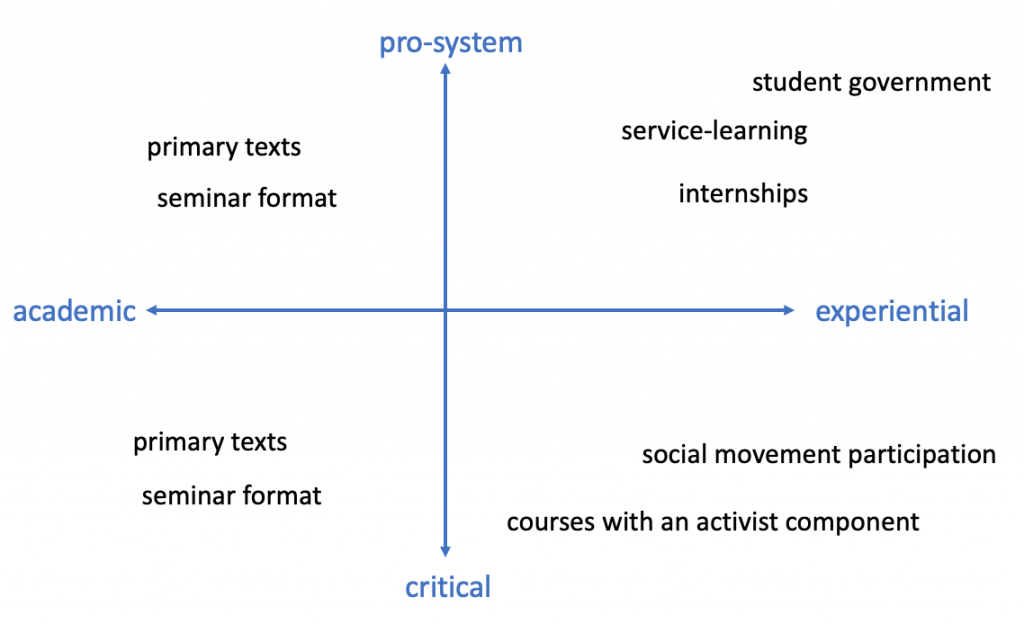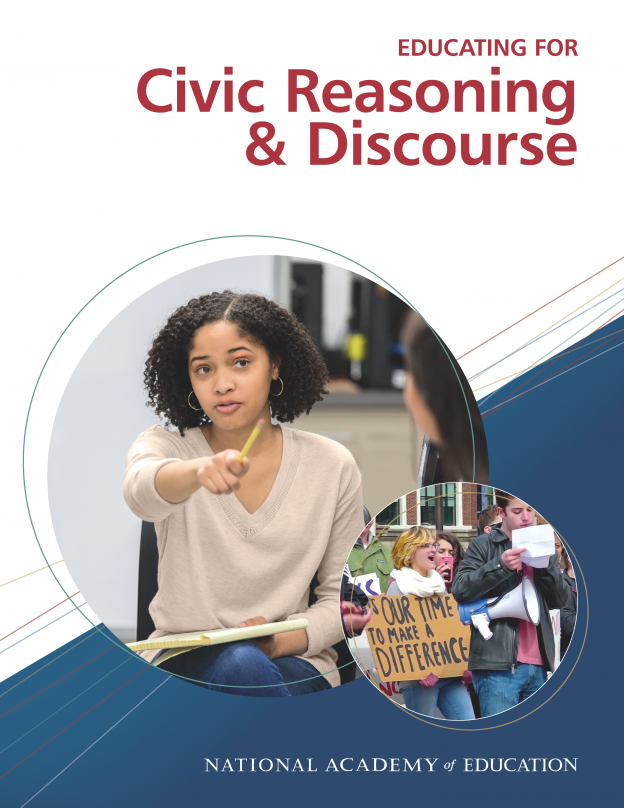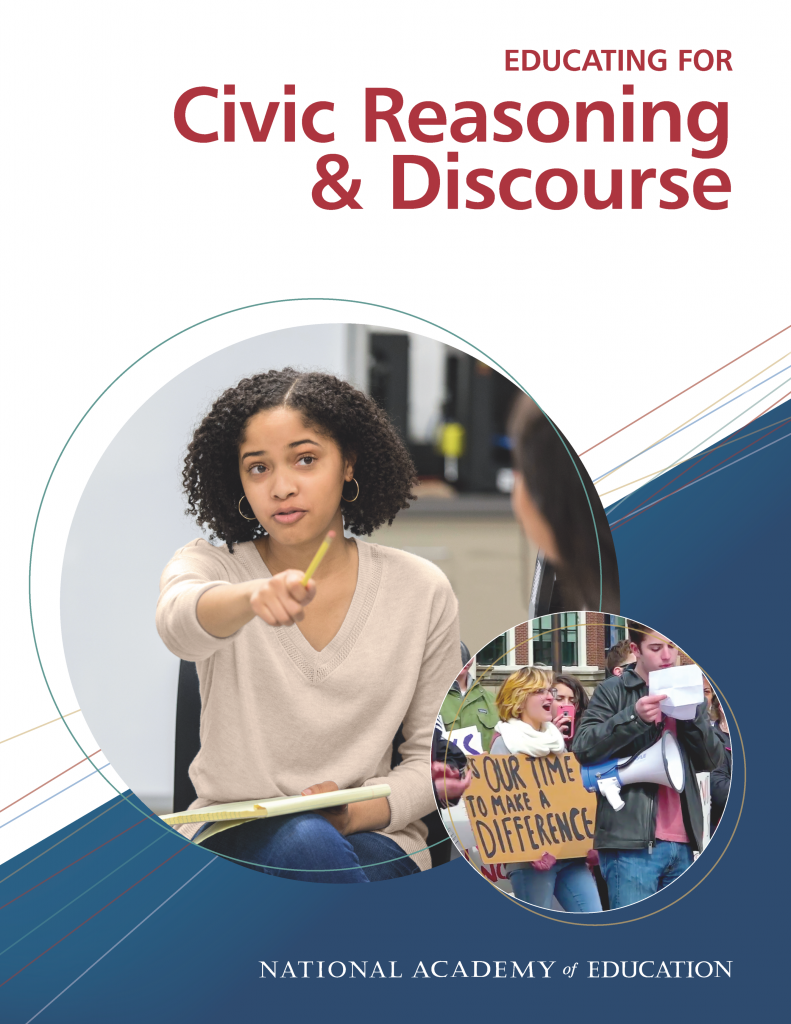- Facebook453
- Twitter1
- Total 454
My book entitled What Should We Do? A Theory of Civic Life will be released in April 2022. It summarizes the concepts and ideas that I believe are most useful for people who want to improve their communities and the world. It is based on many years of teaching undergraduates and advanced graduate students and seasoned practitioners, while studying and promoting civic education in K-12 schools.
Obviously, my list of concepts and how I think about them are completely debatable. But what if we wanted to teach many people some set of such concepts without explaining them all (as in a book or a series of lectures)? Could we teach these ideas experientially, so that students consulted manageable bites of theory as they worked together on civic problems? And could we make the learning scalable, so that students could experience it in many schools, colleges, and community settings?
I am thinking about an online simulation along these lines. …
The setting would be a fictional community–maybe a smallish US city with a declining industrial base and a diverse population. (Other versions could be built with different settings). Players could consult summary statistics about this community at any time, such as its unemployment rate, the ratio of arrests by race, or the number of people using its main park. Those statistics would be affected by the players’ choices and behavior–as well as by random factors beyond their control.
Each player would simulate a fictional character who would have personal characteristics, values, and goals; various roles (e.g., a parent of a child in the public schools; the mayor of the city); some money; and the ability to make menu-driven choices at any moment. These choices would sometimes be affected by other players’ actions. Examples might be expanding or contracting one’s own business, voting for various candidates in a mayoral election, or attending a protest, among others.
There would also be organizations: governmental agencies (such as the school board), private associations, and media platforms.* Players would have roles in these organizations, such as a member, a leader, or a subscriber. They would be able to start new associations and media platforms. Governmental agencies would be able to create new agencies under certain circumstances.
Each organization would be able to make choices, such as how to allocate its resources and govern its assets. It would have rules for making these choices, for determining who belongs and holds various roles, and for changing its own rules. For instance, the members of the school board might be elected, they might make decisions regarding the schools by majority vote, but only the city government could change these rules. Meanwhile, a private association might be structured so that anyone could join and might simply be a space for conversation, with hardly any rules.
Players would not be able to communicate with each other at will. True, in a real city, it might be possible for anyone to get any official’s email address and contact that person. But a senior official is unlikely to give a random person much attention–if any. To simulate the friction and inequality of communication in the real world, players would only be able to contact others through organizations, and each organization would have rules for interaction. For instance, members of the school board would be able to message each other freely. When they were together in a group chat, their messages would be open for anyone to read (simulating a public meeting). They could message all parents on a one-way basis. And they could maintain a message board where parents could post comments for them to read. A protest group or a newspaper would have different rules for communication. This means that if you wanted to influence the mayor, you might have to join an association in which the mayor is active, or persuade the newspaper to cover your issue and hope that the mayor reads messages from the newspaper.
The game would start with characters already holding memberships in organizations, and organizations already having rules. Characters might even have drafts of messages ready to send that would start the business of the community. (For instance, the editor of the newspaper would have almost everyone as a subscriber and would have a draft message ready to send to solicit news tips.) Once the game got underway, characters would begin to change their status in many ways and communicate with each other. As a result of all their choices, the community’s statistics would gradually shift.
Finally, each player would have a student page for work outside the game, such as short written assignments that could be graded. Here the student would also see links to accessible summaries of concepts relevant to current events in the game. For instance, if your character is dealing with a good (such as green space or public safety), you would see a link to a wiki-like entry on types of goods, drawn from Elinor Ostrom, that could inform your behavior and give you material to write about. If your character faces a conflict, you would see a short reading on negotiation. If your character is involved in a protest, you would see an entry on social movements.
I can also imagine a hybrid version, with face-to-face meetings of characters plus “meta-discussion” of issues that arise in the game occurring during class time.
*The organizations would not include for-profit firms or markets. My instinct is that fully simulating an economy would make the game too complex, even though the economy is certainly relevant. The focus would be civil society and the state, with the market somewhat to the side. However, individuals and organizations would have economic choices to make, and some characters would have disproportionate economic influence as business owners or investors. Getting them to make helpful individual choices would often be an important strategy for shifting the community’s outcomes.


